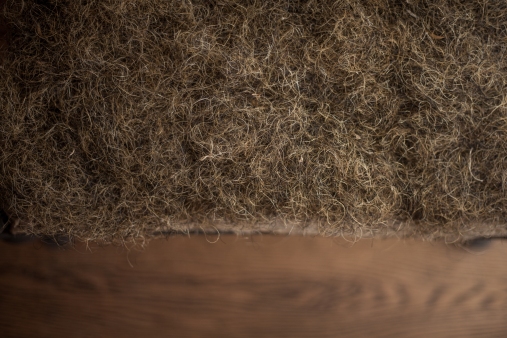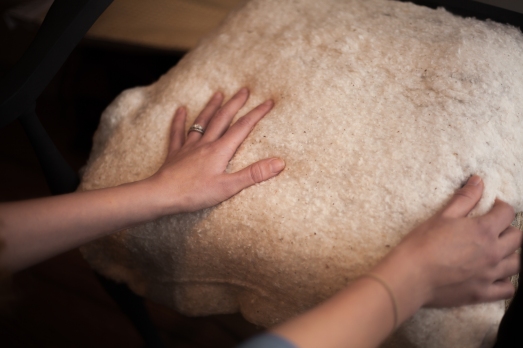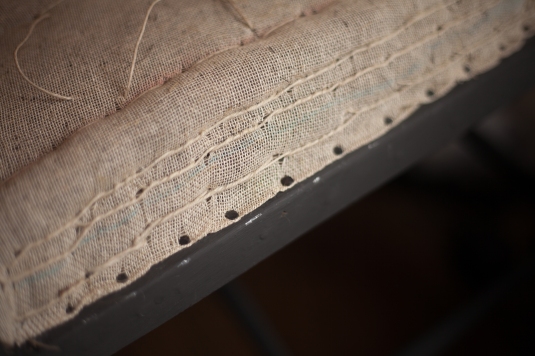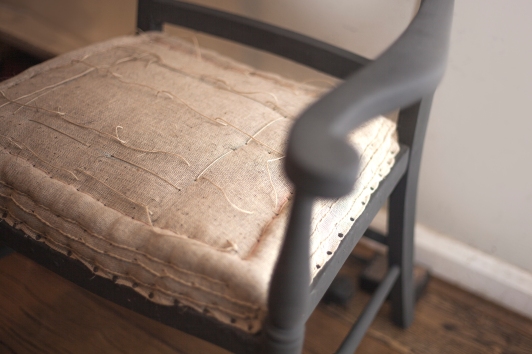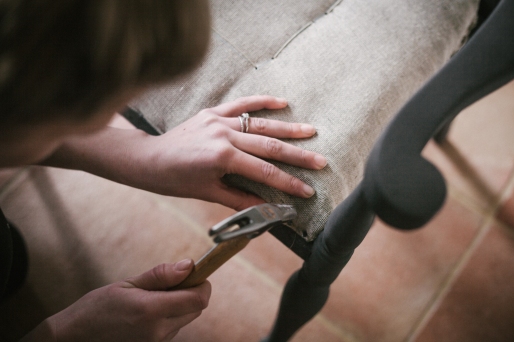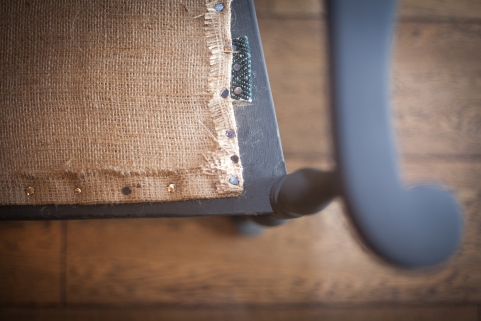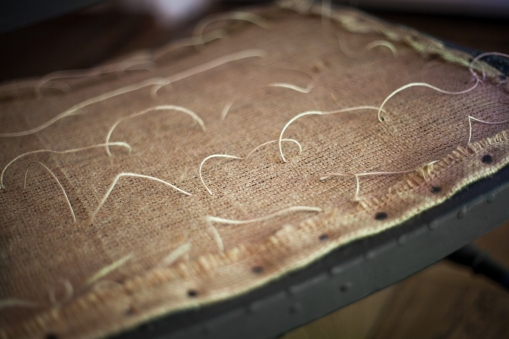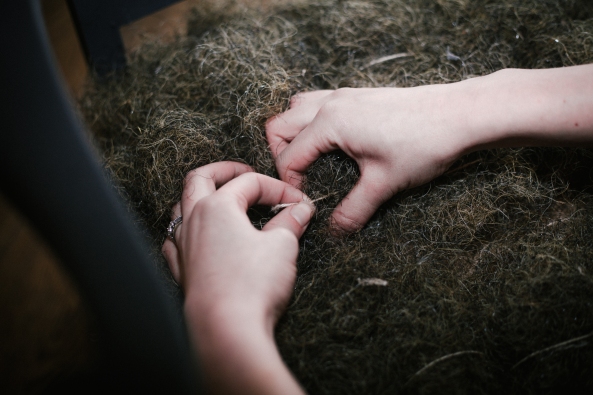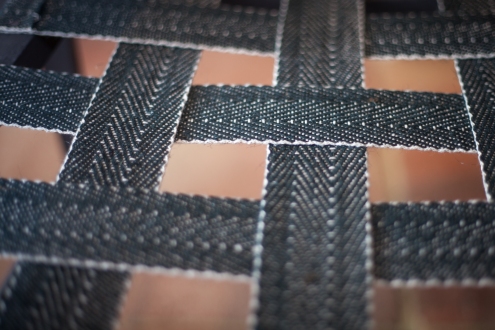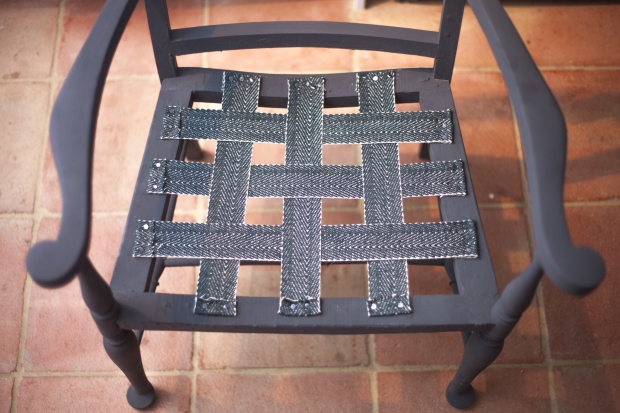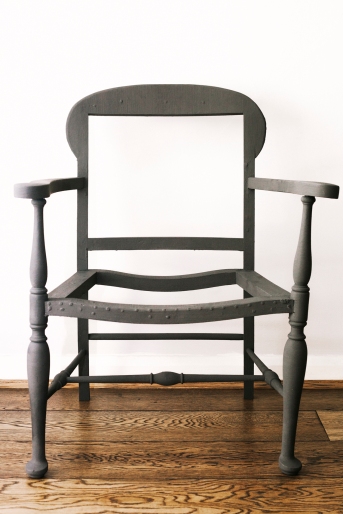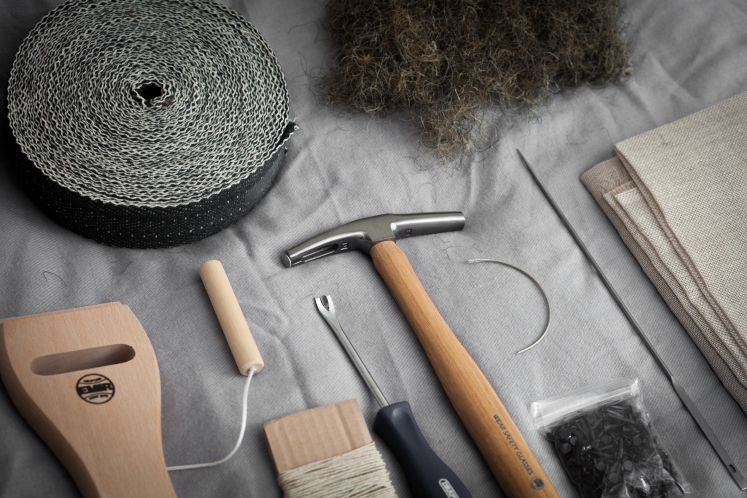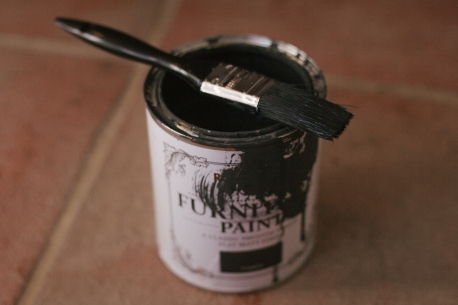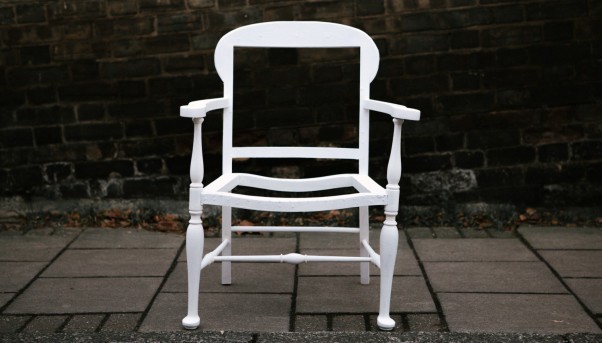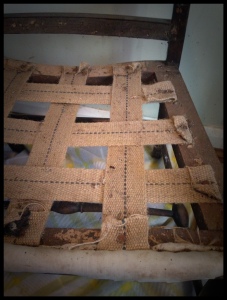Cram more stuffing hair under the bridle stitches, forming a dome shape. This will create the final shape of the seat so make sure you do it right – No lumps or bumps!
When you’re happy with the shape and its as even as you can make it, then cover the whole seat with a layer of wadding. This will prevent the hairs from sticking out once finished – Adios Prickles!
Finally, cover the wadding with a layer of calico. Temporarily tack the calico in place – as taut as you can. Cut V’s at the corners to fit.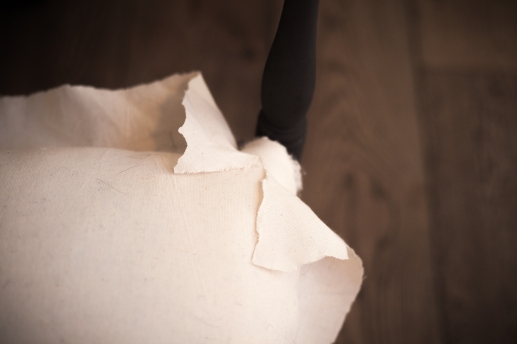
Now the next step is simple: Now just sit on the chair… for 24 hours (Pah, this is what my upholstery book instructed!). If you have a life, put a stack of books on it. This will stretch the calico. Once stretched, remove the temporary tacks, pull it taut once more and re-tack. Trim the calico close to the tacks. Done. 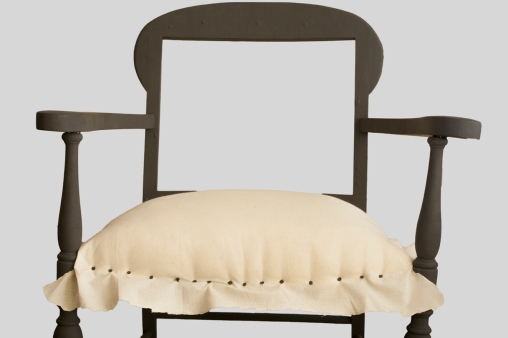
Next step… FABRIC! Waaaaaahhhhhhhhhaaaayyyyyy!!!


